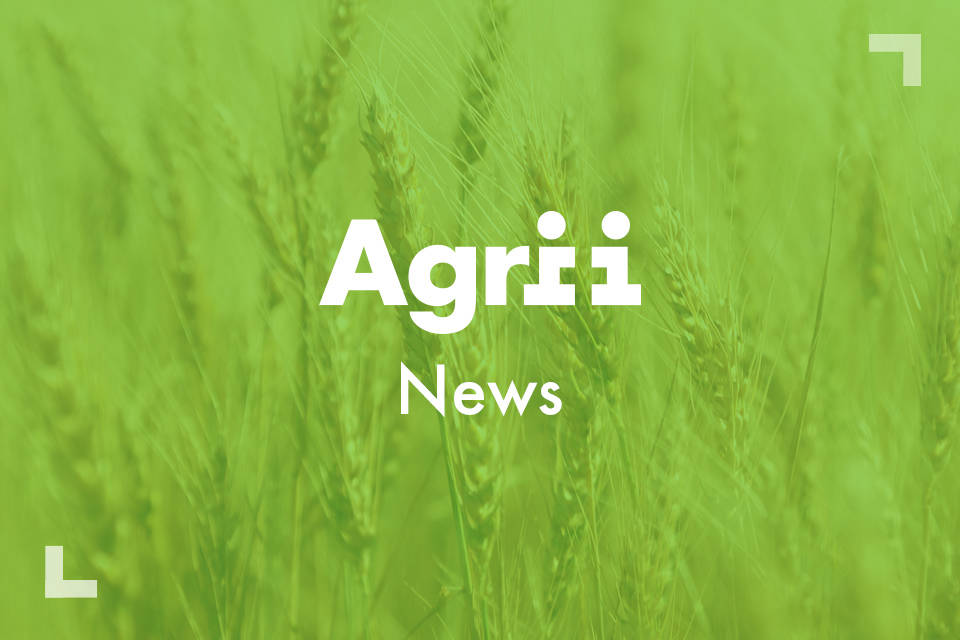
New UK Program promises barley breeding progression
News - 08.03.21
Promising new material is emerging from a barley breeding programme set up in the UK just five years ago.
With a completely new UK programme delivering three newly Recommended spring barley varieties and a novel Nationally-Listed naked barley for food use in 2023 inside five years, Paul Bury and his Secobra Researches team have not been resting on their laurels.
They insist, though, this is only the start for the Northern European spring barley programme set up in 2017 to combine the best of modern plant breeding science, technology and traditional breeder intuition. Next in the pipeline are three strong malting AHDB Recommended List (RL) candidates for 2024 plus three of the top five National List (NL) 1 varieties moving into NL2.
"We are pushing spring barley development ahead by rapidly moving from the genetics and statistics of plant breeding's past to the genomics and data science of the 21st century;' says Mr Bury.
"Doing so is enabling us to replace high numbers of crosses and throughput with a more focused, better-targeted and altogether more efficient approach. Complete DNA profiles of all our lines and sophisticated computer modelling means we are predicting the result of crosses for a whole host of traits with increasing accuracy. This means we can dramatically reduce the number of crosses we actually make, concentrating on those most likely to deliver.
"Genomic information on the results of these crosses further allows us to pre-select early-stage lines amongst large populations so we only grow on the most promising for field selection. And the greatest possible use of drones and other technologies gives us rapid and comprehensive assessments of key traits to aid our selection.
Data analysis
Add extensive data analysis across multiple generations and locations throughout the whole process from crossing to advanced trials and we have a tremendous set of tools to support the breeding experience and intuition that remain at the heart of our variety development:
To be consistently competitive in the breeding world at this young stage in their programme's development is certainly an achievement. More than this, Secobra see it as proof they are on the right track in combining the science and skill of breeding in a thoroughly modern way, and the best possible indication of the potential their approach offers for the future.
Alongside the highest yielding spring barley on the new Recommended List - feed variety, Hurler - the team are bringing newly recommended specialist brewing variety, Sun King and distilling variety, Diviner to the market from 2023 in partnership with Agrii.
All three offer significant steps forward for the industry, believes Agrii seed technical manager, John Miles. "Hurler leaves other feed barleys standing yield-wise;' he says.
"It's two percentage points clear of any other listed spring barley and very robust agronomically. In particular, scores of 9 for both lodging and brackling resistance make it the strongest-strawed spring barley. "With a similar malting quality to Planet, specialist brewing variety Sun King is 6% higher yielding than the market leader and decidedly stronger agronomically, with better disease resistance and straw strengths.
And equally high yielding Diviner is a Scottish variety through and through, with very good grain quality, spirit yield, resistance to skinning and all-round agronomics.
"These malting additions nicely complement Skyway for mainstream brewing, giving us three of the top five spring making barleys on the current Recommended List as well as the best performing feed variety," says Mr Miles. "Not forgetting Secobra's Explorer which remains the first choice for high-nitrogen Budweiser contracts, of course.
"On top of these feed and malting types, we have jointly gained National Listing for the first in the new pipeline of high health, naked (hull-less) barleys we have been developing for the food industry. As there's no RL category for it, we haven't taken Tenzing forward as a candidate here.
"Instead, we are working through GB Seeds with a number of UK and European food businesses to develop premium markets for its superior, high (3-glucan fibre quality, offering great wholegrain human health advantages:' Opening up new food industry markets for the likes of granola, muesli, nutritional bars and on-the-go meals with a listed naked barley is a hugely exciting step forward, adds Mr Miles.
Especially so, at a time when spring barley-growing has become more popular in UK arable rotations for black-grass control, soil and other environmental benefits as well as its margin earning capacity.
Traits
Bringing additional traits like these for new markets as well as building on established ones in existing sectors is something the new programme is particularly well-placed to do with the resources of one of Europe's leading barley breeders behind it.
Secobra's strong pre-breeding pipeline and huge data processing resource is enabling its small Lincolnshire-based team to both introduce new gene combinations and reinforce existing ones with great reliability without losing other desirable traits; and faster than ever before. "AHDB work including several old varieties alongside current ones at key RL sites in 2020 and 2021 shows breeding has raised the farm productivity of spring barley by almost 2t/ha in the past three decades," says Mr Bury (see graph).
"While yields over 8t/ha are pretty common today, we see no slackening off in the pace of performance progress.
If anything, in fact, we believe our modern breeding approach will accelerate it. With plots in our development trials with Agrii pushing on 13t/ ha last season, we think we should regularly be able to bring in over 10t/ha from quality spring barleys in the future.
"In malting barleys our prime focus is on maximum extract (potential sugar/alcohol) per hectare. Alongside this we are concentrating on greater sustainability for the whole barley chain. Which means grain which is more efficient to process as well as crops that are better able to deal with a range of environmental stresses."
Drought tolerance
While less 'plastic' in compensating for setbacks than wheat, barley stands out for its noticeably greater drought tolerance and nutrient scavenging ability, making it the cereal of choice in some of the driest parts of the world.
It also remains by far the most popular spring cereal in northern Europe, offering important environmental and economic opportunities for growers and processors wishing to improving sustainability.
Both Mr Bury and Mr Miles see huge potential for building on the crop's advantages by continuing to improve the reliability as well as level of its performance. Among other things, they point to resistance scores of up to 9 for both rhynchosporium and net blotch available in their current germplasm as well as Yd2 genetic tolerance to BYDV from winter barley.
They are also actively exploring a range of other resilience traits - including greater nutrient use efficiency - across all the variety types. "It's all about achieving best genetic balance," says Mr Bury. "Complementing our breeding skills with the latest genomic technologies is giving us a huge advantage in ensuring we introduce the additional traits we want into modem high-performance backgrounds with the least 'baggage' from their sources. It is also allowing us to pinpoint multiple copies of known genes and bring them together to magnify key traits.
"We are confident we are making far greater all-round genetic progress with our pan-genome approach than has been possible historically. At the same time, our close partnership with Agrii ensures our varieties are developed and tested to meet the most realistic current and future UK growing challenges and market opportunities. Equally, it is enabling growing regimes to be fine-tuned to their particular characteristics for the best results from the day they become available commercially."
While Secobra is confident the next generation spring barleys they are pioneering offer a step forward every bit as profound as Planet and Laureate did in the last decade, they and Agrii insist they have no plans to substantially expand the scale of their development work. Instead, they are set on applying the modem genomic, data processing and testing resources they are harnessing, together with increasingly close working across the entire production chain, to increasingly better effect. And, based on what has been achieved in such short a time so far, they are off to a flying start.
Join Our Community

Agrii X
We love engaging with clients and partners. Give us a follow and let's share stories for the community.

Agrii Instagram
A picture paints a thousand words. Follow us on Instagram to see what we are up to.

Agrii Facebook
Follow us on the worlds biggest social media site for the latest news and events straight to your feed.

Agrii LinkedIn
If you are all about the business, connect with us on LinkedIn to build your network
Stay In Touch

Journal Sign-Up
Receive email updates on topical news and information from around Agrii and UK Farming.

Listen To Our Podcasts
Listen to the Tramlines Podcast. Fortnightly chat about agriculture and trials with your host Tony Smith.

Agrii Insights
Read essential agri intelligence for profitable farming.

Find an Event
Join us for our upcoming events and tours.





